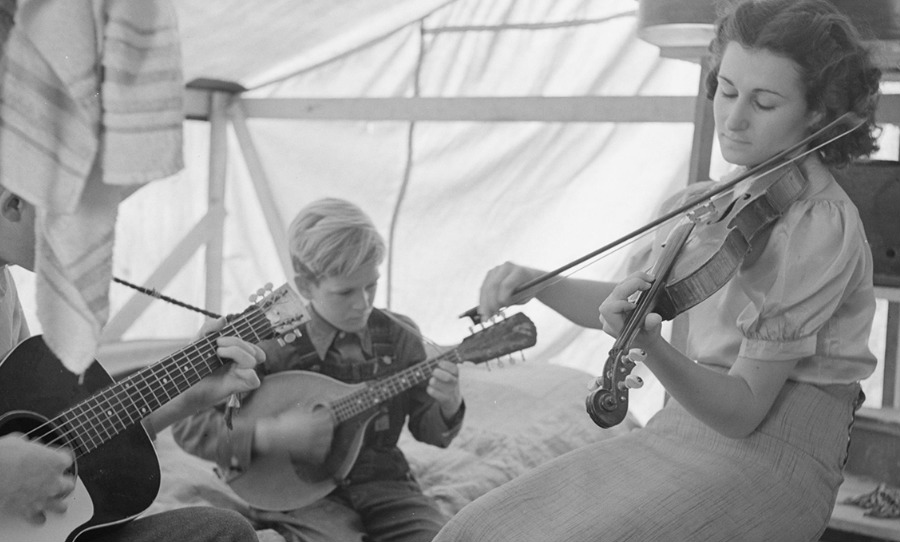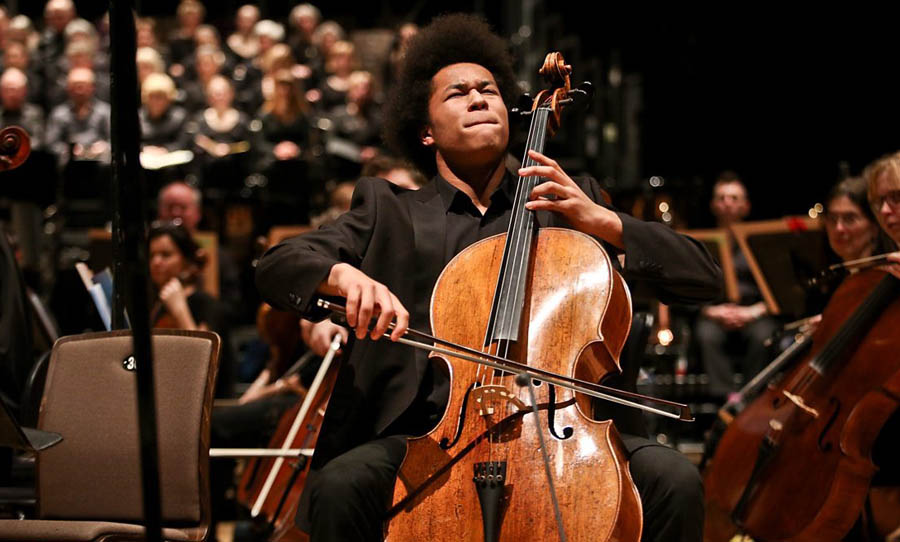Dredged up from the silt, smoke, and mud of America’s most poverty-stricken came the birth of country music. While many historians point to 1927 as the year country music began with the signing of Jimmie Rodgers and The Carter Family to Victor Records, its roots snake back much further.
This is how the African banjo met the Appalachian fiddle and birthed an ebullient wave of country music, in a time of relative darkness.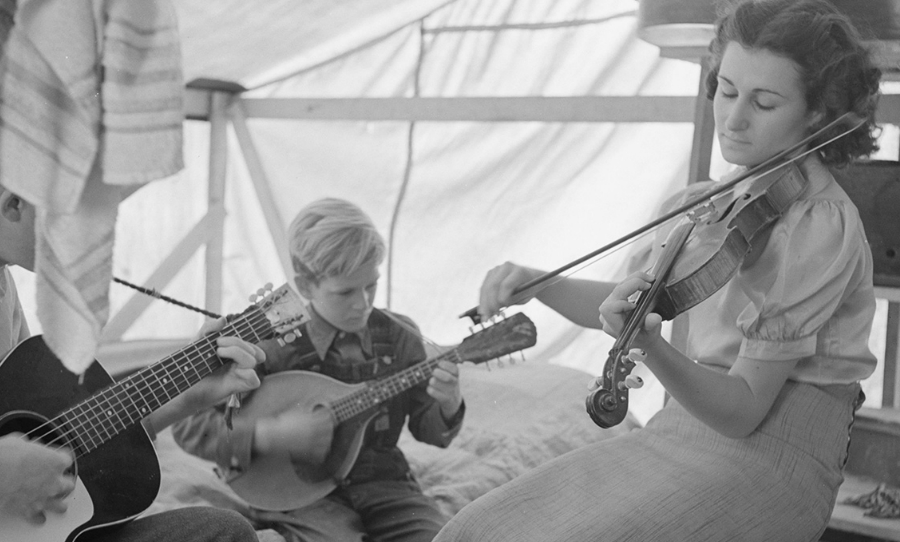
When the folklore of the African immigrants of the 1600s met the fiddle of the Appalachian mountains, country music was born.
African origins
Perhaps the most iconic country music instrument of all is the banjo. It’s classic, twangy sound is instantly recognisable but its roots stretch back much further than Amerian history.
Between 1500 and the end of the slave trade in the 1860s, it is estimated that 12 million Africans were uprooted and forcibly taken to the Americas, then known as the ‘New World’. Some 50 ethnic and linguistic groups were taken, in what is recognised as the largest forced migration in history. However only a small portion was sent to North America – less than half a million – and they brought their folklore, folktales, and music with them.
Evolving from the akonting: a three-stringed instrument with a body of calabash gourd with goat hide stretched over it, the banjo was developed in the Caribbean by the people of West Africa to involve a fourth drone string.
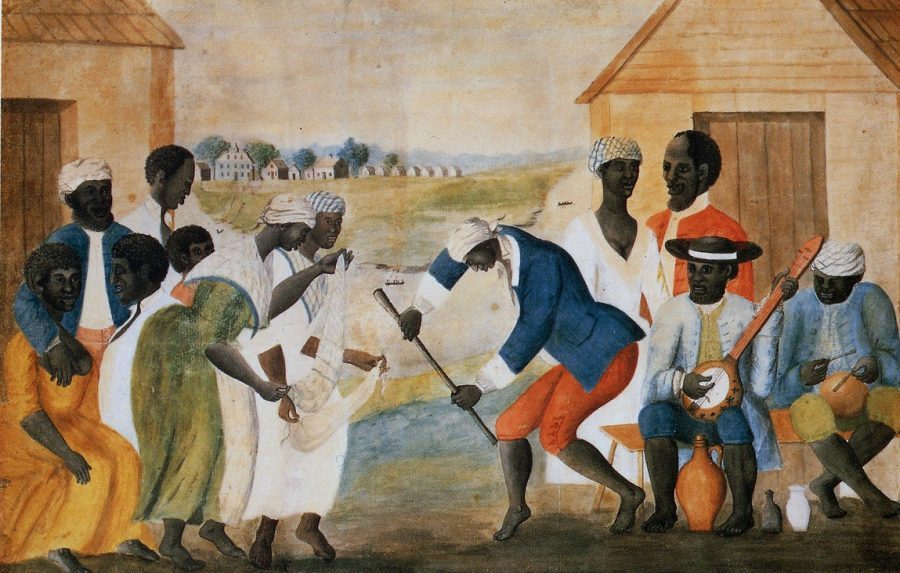
Classical era
By 1861, the banjo had begun to pervade American culture through a boom in popularity amongst youth known as ‘banjo mania’.
During the 1880s there was a movement to “legitimise” the banjo and make it a classical instrument. The upper echelons of society’s elite thought the banjo was a “musically feeble gadget of the lower classes” but were equally fascinated by it.
Much like the violin of Europe, this movement was initiated by white people of European descent, who introduced fingerpicking and sheet music into the minstrel age. By 1900, the banjo had a modernised look with instruments of varying pitch, exotic timbers, polished metal sides, and five strings.
The Appalachian fiddle
Appalachian music is derived from various European and African influences, culminating in the Eastern United States. The fiddle found its way to America from Europe as a member of the violin family. Early settlers realised it was easier to transport the small, rugged viol family.
According to Ron Yule, “John Utie, a 1620 immigrant, settled in the North and is credited as being the first known fiddler on American soil”. When the banjo inevitably found its way into Appalachian music there was an unprecedented confluence of styles and cultures, culminating in the creation of bluegrass and country music. This widespread interest in Appalachian music became a precursor to the American folk revival of the 1960s.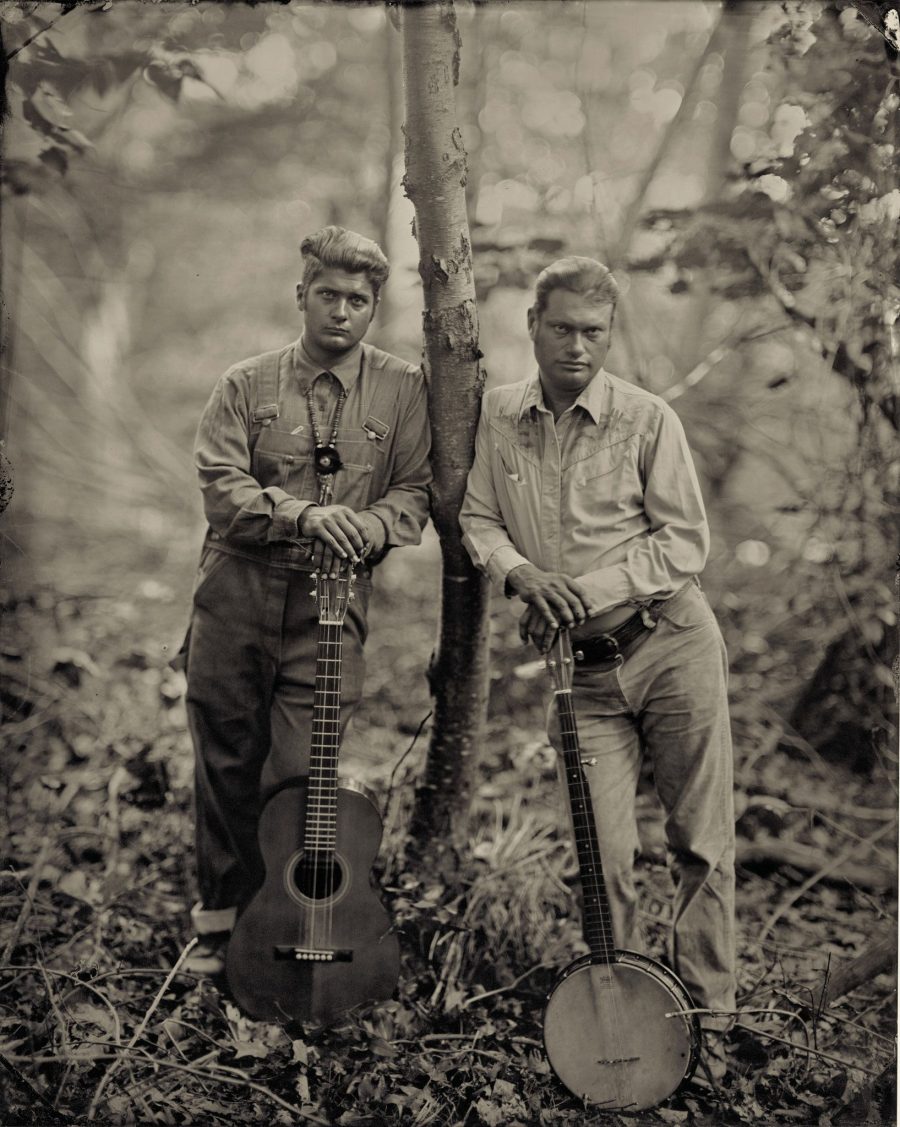
The Carter Family
Much like the blues, country music was heavily influenced, inspired, and conceived by African-American artists, however, they were at a significant social disadvantage compared to their white counterparts.
The first widely accepted country song featuring vocals and lyrics came from Fiddlin’ John Carson with Little Log Cabin in the Lane, for Okeh Records on June 14, 1923.
The Carter family are considered the first family in country music and, along with Jimmie Rodgers, key contributors to its mainstream success. Up until this point, country music was considered a hillbilly hobby for backward hicks.
Not only did many Carter numbers become standards in the country music canon, but they also developed a style of guitar playing called ‘Carter picking’ which dominated country technique for many decades.
The Carter Family story begins with Albin Pleasant Delaney Carter (A.P.) who was raised in the Clinch Mountains of Virginia. A.P. learnt to play the fiddle as a child, from his father, and gospel singing from his mother.

Upon adulthood, he left Virginia and met Sara Dougherty on his travels. As legend has it, she was on her porch playing the autoharp and singing Engine 143, when they met.
A.P. and Sara quickly fell in love and were married on June 18, 1915, settling in Maces Springs where A.P. sold fruit trees and the eloped couple sang at local parties and gatherings.
During the next 11 years, the couple played locally and even auditioned for Brunswick Records, but the label was only willing to sign A.P. and only if he recorded fiddle dance songs under the name ‘Fiddlin’ Doc’. They also didn’t believe the public would like a female country singer.
A.P. rejected the offer, believing Sara had the better voice. Soon Maybelle Carter married A.P.’s brother Ezra and the famous trio was formed.
The Carter Family signed with Victor Records in 1928, and in the course of seven years recorded some of the most famous country songs in history including Wabash Cannonball, I’m Thinking Tonight Of My Blues Eyes, Wildwood Flower, and Keep on the Sunny Side, which became their signature song.
The group was greatly hindered by the Great Depression, though they still enjoyed one of the most successful careers in country music history. Maybelle Carter had three daughters, Helen, Anita, and June Carter, who would marry Johnny Cash.
